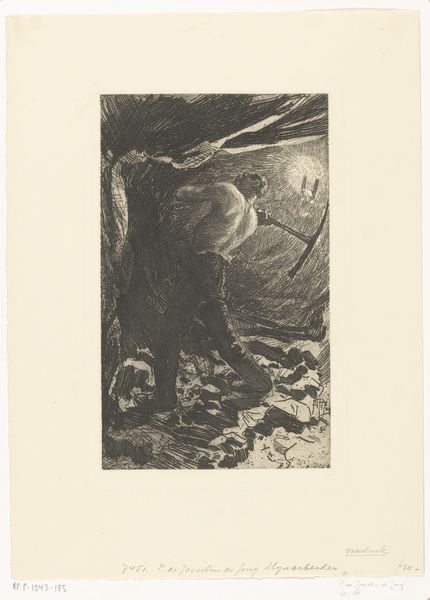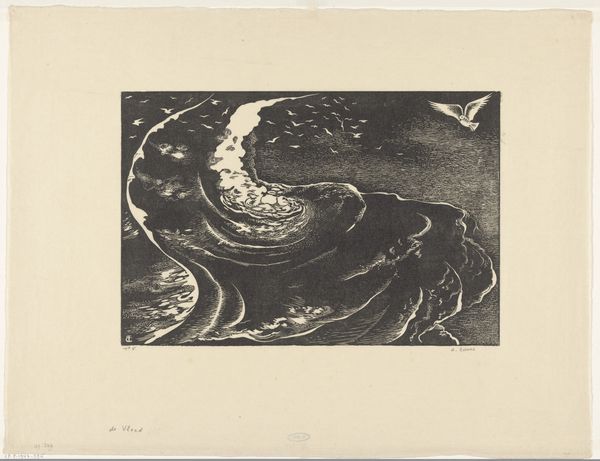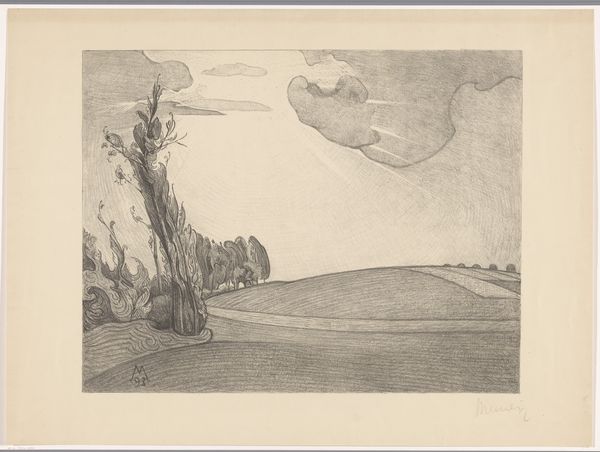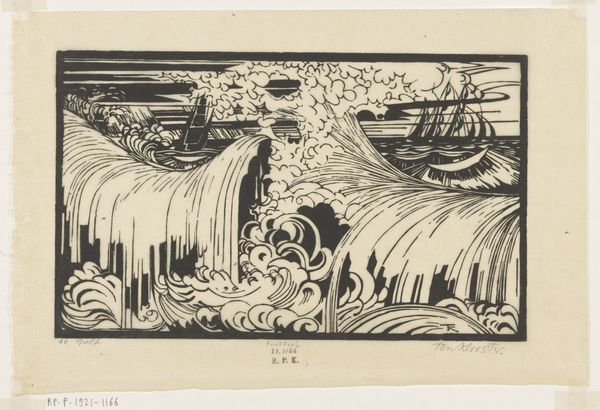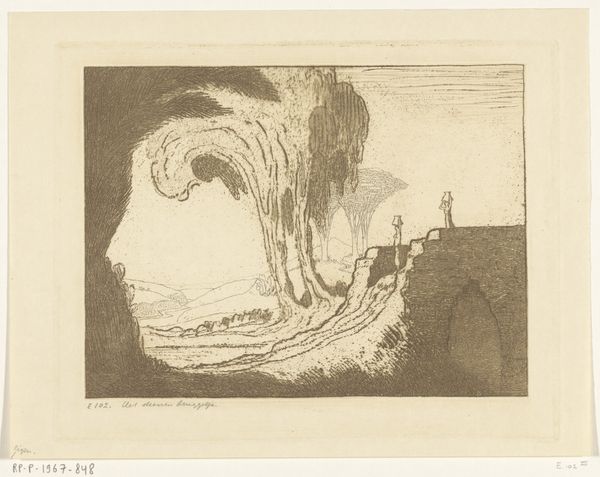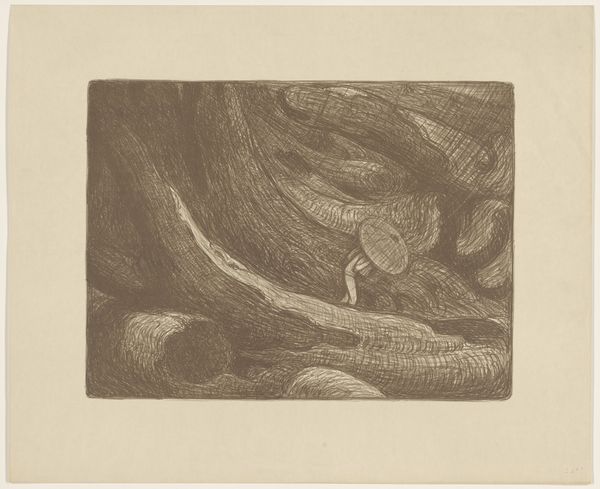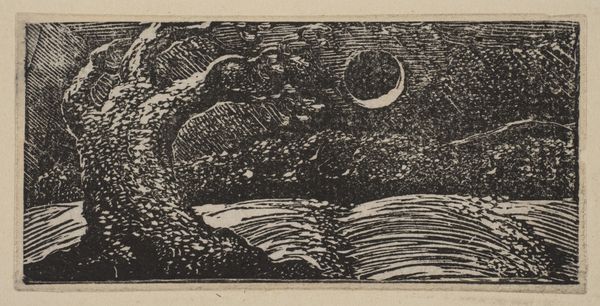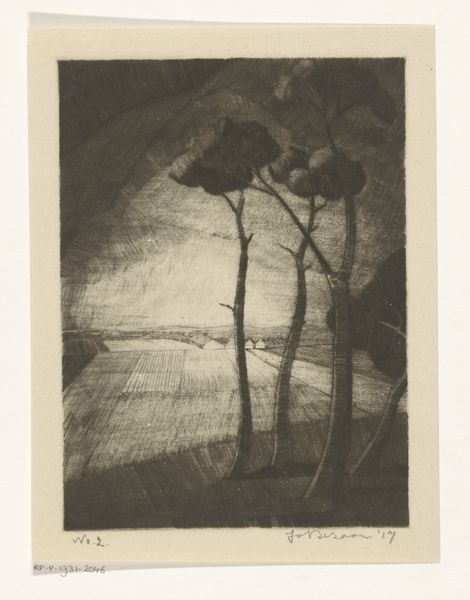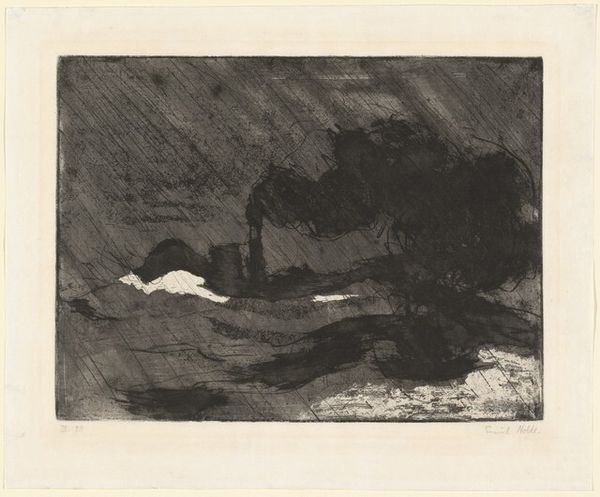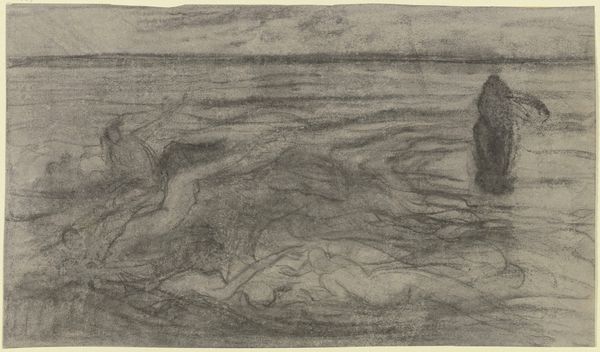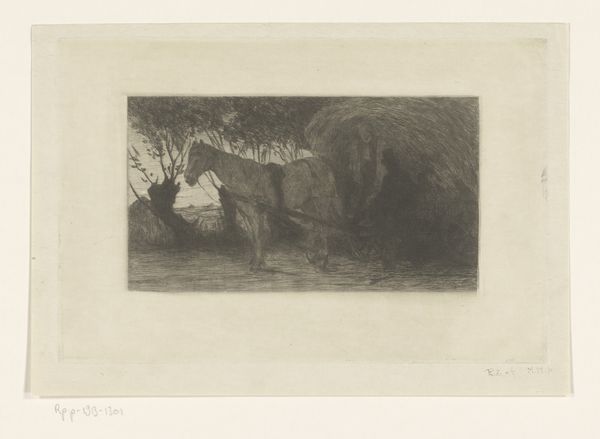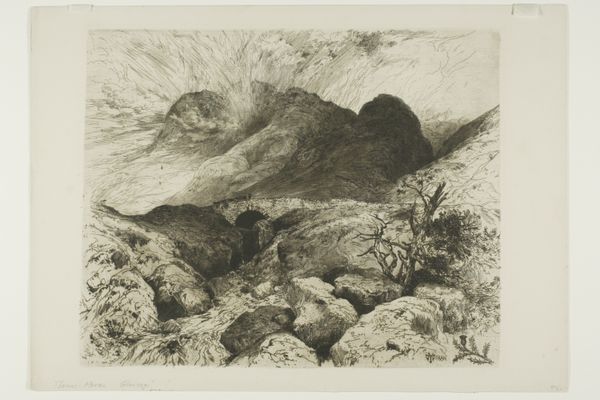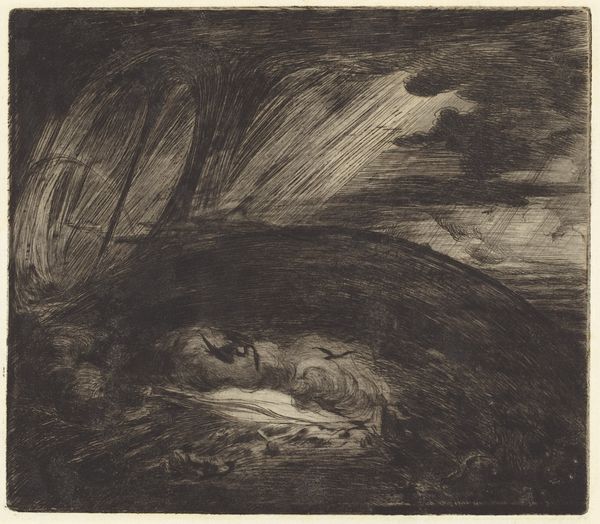
Dimensions: height 300 mm, width 424 mm
Copyright: Rijks Museum: Open Domain
Editor: We’re looking at Simon Moulijn's "Ophelia drijvend in het water," an etching from 1922, housed here at the Rijksmuseum. There's such a stillness to it, a quiet darkness emphasized by the light pencil work. What elements of its composition stand out to you? Curator: The stark contrast between the ethereal face and the dark, enveloping water immediately commands attention. Consider the strategic placement of the head: its horizontal orientation perfectly mirroring the water's surface, creating a sense of unsettling repose. Notice also the artist's deliberate choice to obscure the body. Do you observe how this absence contributes to the sense of mystery? Editor: I do. It's almost dreamlike. What about the use of line? It feels quite delicate. Curator: Precisely. The etching technique allows for a remarkable delicacy. Observe how the lines describing the water aren't simply lines but tonal variations. Notice the difference between the tightly hatched area beneath her chin, contrasting with the broad strokes that define the surrounding water. This adds depth and contributes to the feeling of her body sinking into the landscape. Editor: So the technique reinforces the theme? Curator: Indeed. And the dark tones that frame her face draw us in; consider how the branch above and the weeds below serve as visual anchors, focusing our gaze. Ask yourself, what is the effect of this careful arrangement? Editor: I see… they create a visual frame, trapping her in the watery scene. I’d initially focused on her expression, but looking at the formal aspects of the composition reveals another layer of meaning. Curator: Absolutely. It’s in this intricate interplay between subject and execution that we start to unlock the work’s true power. Editor: Thanks, looking at how Moulijn used technique and form has really enhanced my appreciation of this image.
Comments
No comments
Be the first to comment and join the conversation on the ultimate creative platform.
